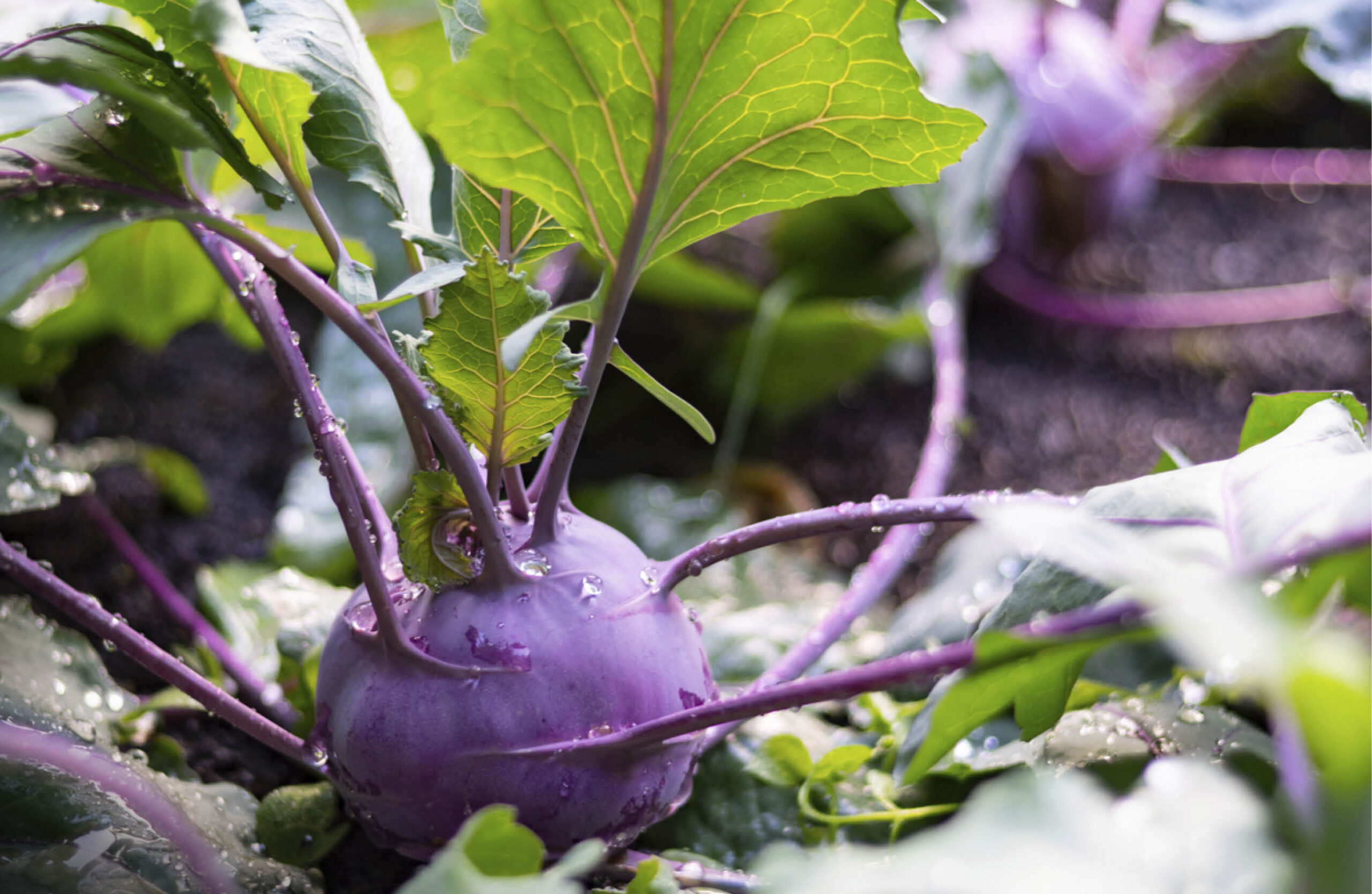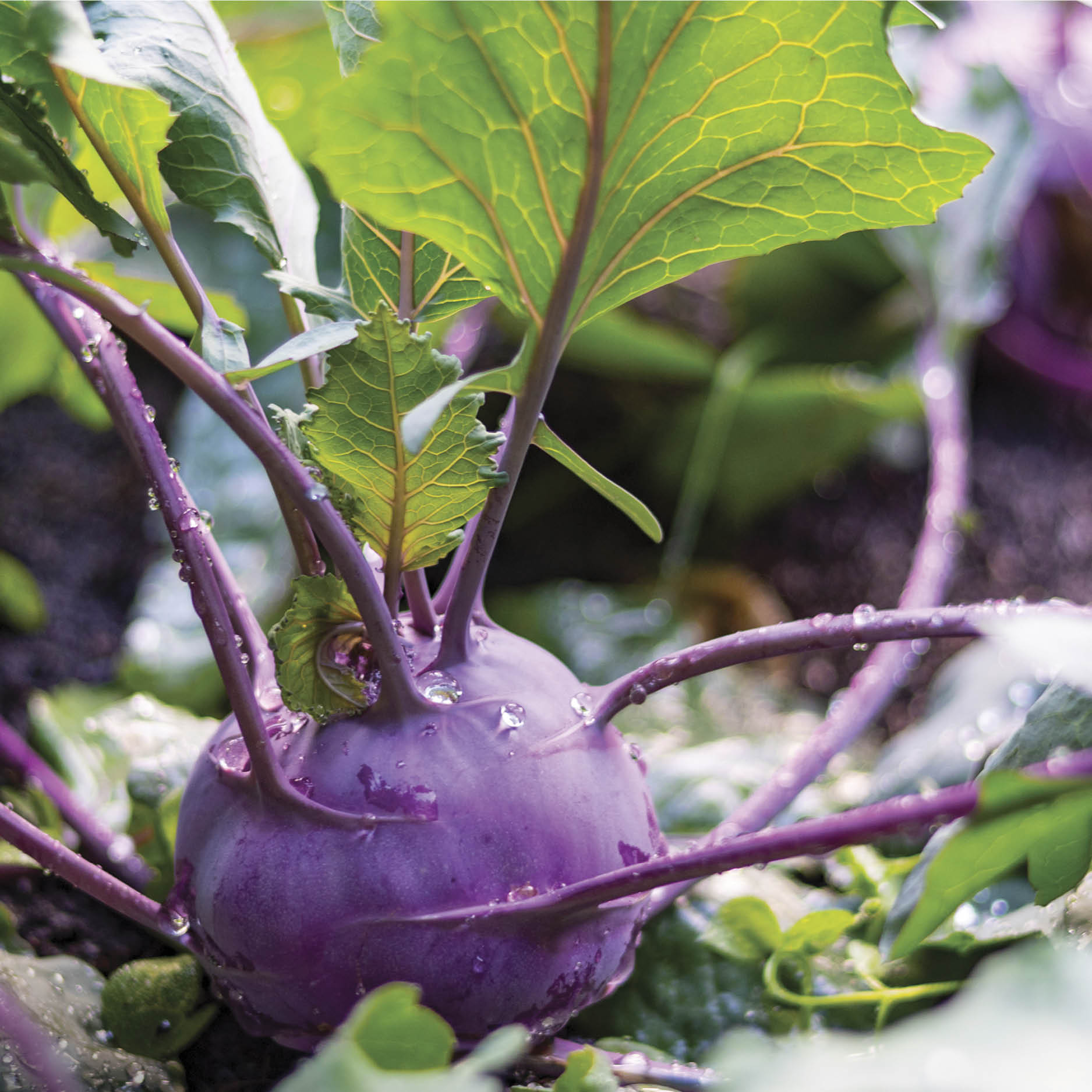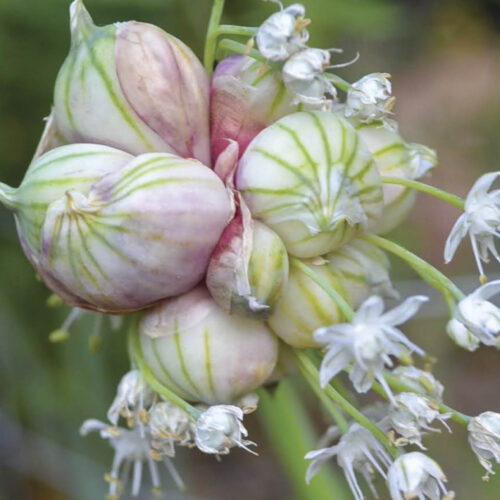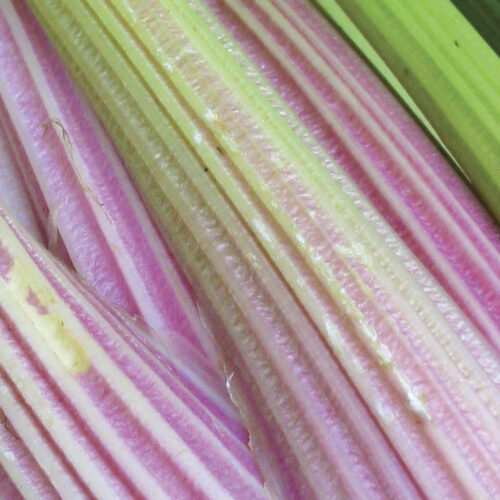How to grow kohlrabi
2022-08-22T05:05:30+10:00
Grow kohlrabi in your vegie garden and discover an ingredient that will add crunch and flavour to salads and stir-fries.
What do you get when you cross a cabbage with a turnip? It may sound like the opening line of a bad dad joke, but it’s also pointing you in the direction of one of the vegie garden’s most underrated performers – the humble, the bulbous, and the delicious kohlrabi.
Despite its similarity to an above-ground turnip and the oft-used moniker of German turnip, the kohlrabi (Brassica oleracea, Gongylodes Group) is not a root vegetable, instead having a swollen stem that grows above the ground. It is a member of the brassica family and has a subtle, almost sweet flavour with a texture similar to that of a potato.
Like all members of the brassica family, kohlrabi traces its roots back to the ‘Wild Cabbage’ and is believed to have been first cultivated in Northern Europe in the 14th century. We can thank the Germans for the catchy name, with kohl meaning cabbage and rabi turnip in German.
The plant is now cultivated in home gardens and on farms around the world and it would seem that kohlrabi is finally coming out from the shadows.
Being frost-hardy and fast-growing, kohlrabi can be planted from late winter to spring so you can grow and harvest it before frost-tender spring plantings like tomatoes. Not only that, it looks stunning in the patch and when harvested creates lots of interest in the kitchen, where it’s worth experimenting with this new ingredient.
Are you convinced yet? Are you on the kohlrabi train? Yes? Good!
Growing needs
Kohlrabi is a relatively compact plant so can happily be grown in containers or the garden. It thrives in full sun, though will tolerate some shade, and like all brassicas, does best in rich, free-draining soil with a pH between 6.0 and 7.5.
The plants are shallow-rooted and will greatly benefit if the top layer of soil is lightly aerated and enriched. Before planting, gently fork in some aged compost, worm castings or organic fertiliser. Also, if your soil is acidic, add lime as needed according to packet instructions.
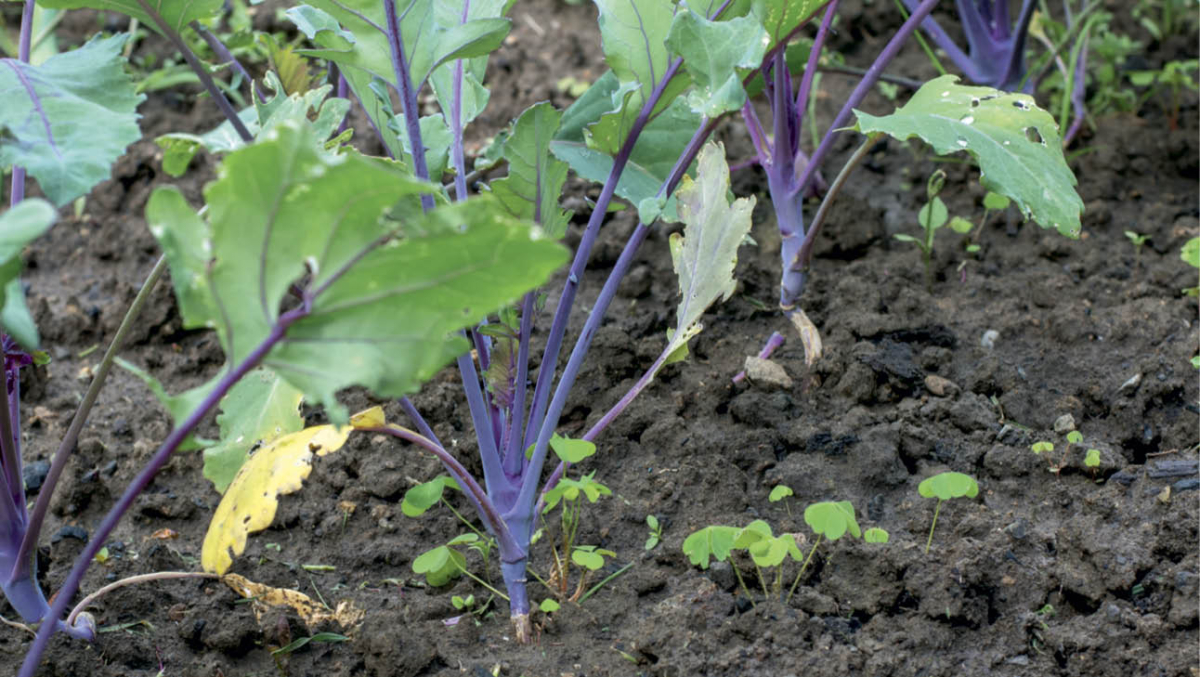
Kohlrabi is best grown from seed with sowing times depending on your climate zone. Cold temperate: spring and summer; warm temperate and arid/semi-arid: late winter to mid-autumn; tropical and subtropical: autumn to early spring.
Kitchen uses
We’ve established that kohlrabi is not a cabbage or a turnip, and when it comes to the kitchen, I find it has a sweet, peppery flavour – something like a subtle combination of apples and radishes. To prepare a kohlrabi, get yourself a robust vegetable peeler and use it to remove the fibrous outer skin. Once peeled, there are numerous options. I like to thinly slice the stem into discs to use as crudités, cut into thin matchsticks and dress in mayonnaise for a remoulade-like accompaniment, or cut it into larger matchsticks to be used as a part of a stir-fry. You could also use kohlrabi as an addition to soups and stews, although the flavour and texture are lost. For me, it’s raw, quickly cooked or nothing!
Keys for success
Position: Full sun to partial shade
Soil: Free-draining and enriched with compost, manure, worm castings or organic fertiliser.
Plant: Sow seeds direct
Maintenance: Water lightly and frequently at soil level, feed once every week or so with a liquid organic fertiliser
Pests: Be mindful of cabbage white butterfly and brassica downy mildew.
Harvest: 4-7 weeks.
The full article about growing kohlrabi appeared in our Early Spring 2021 issue (OG 127). There’s a selection of back issues available here — you can also subscribe and get the most recent issues delivered to your door!

